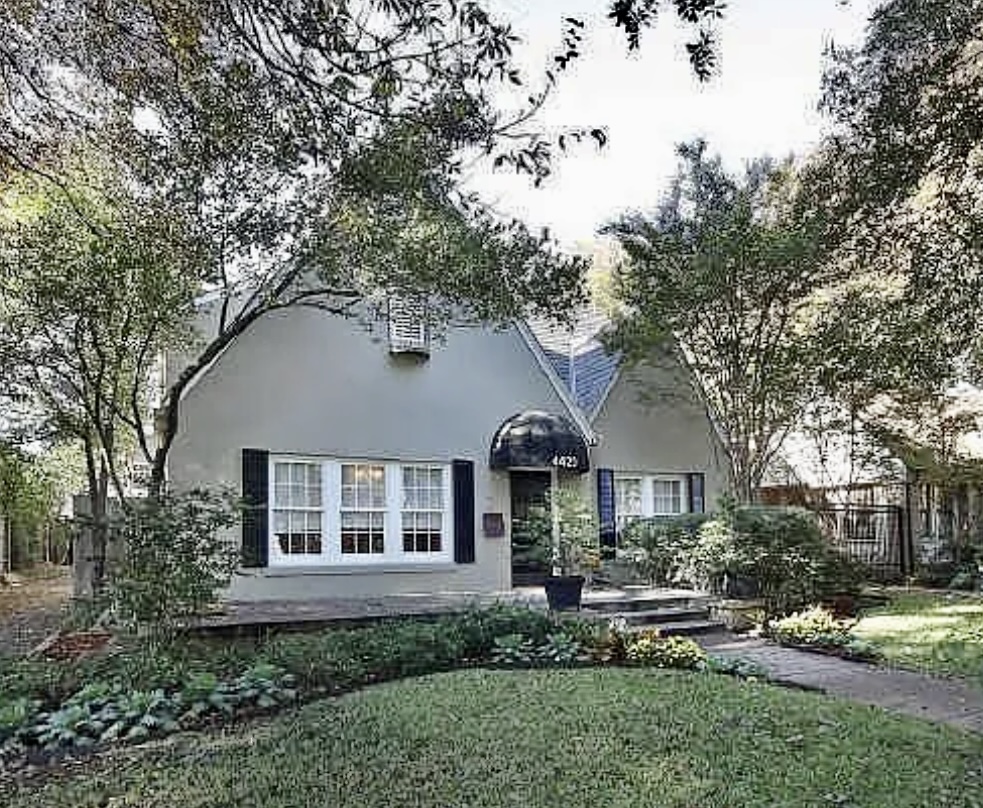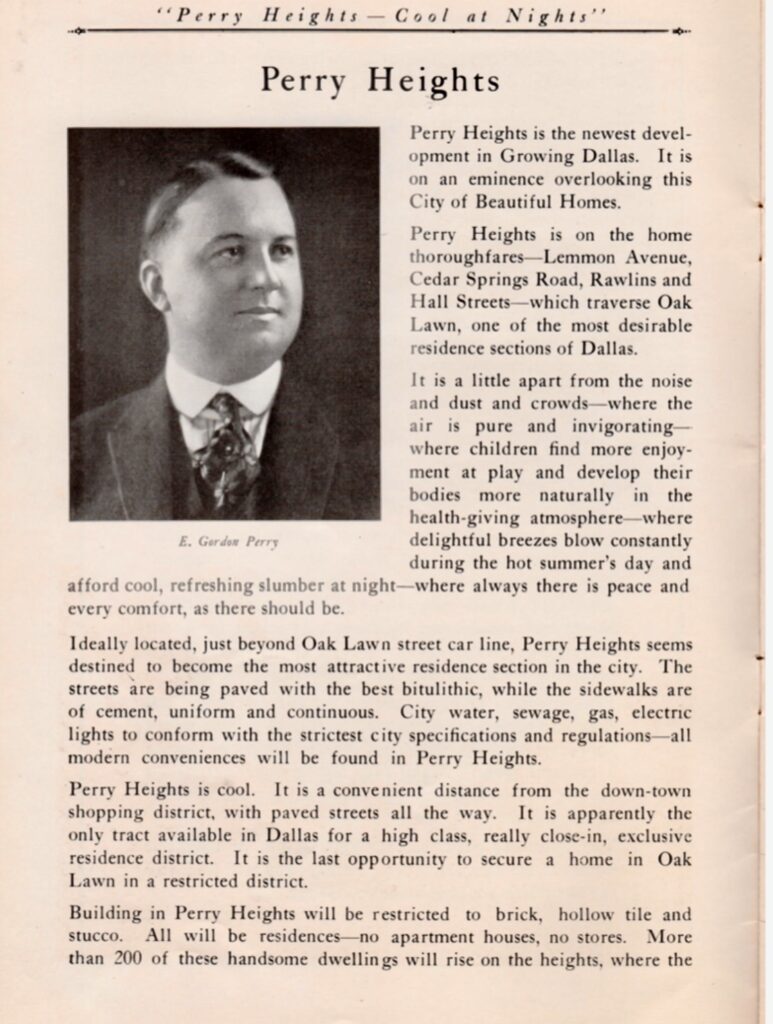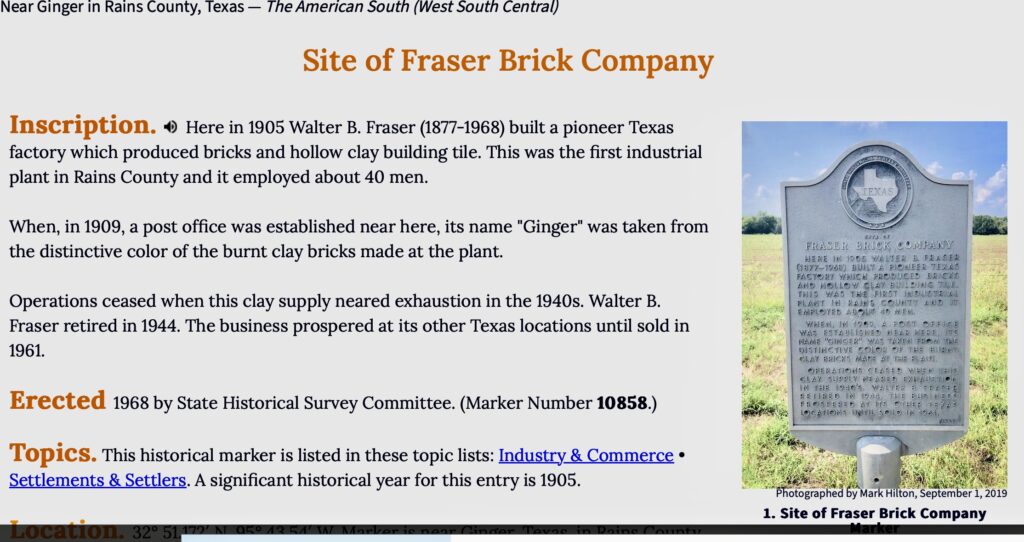
Perry Heights was developed with strict building restrictions: only single-family residences were permitted—no apartments, no stores. Additionally, construction was limited to materials such as brick, hollow tile, or stucco.
What is Hollow Tile?
Hollow tile, also known as hollow clay tile, was a popular building material in the 1920s. Made from fired clay, these hollow bricks were used for structural walls, floors, and roofs. In wall construction, they came in both load-bearing and non-load-bearing grades and were typically faced with decorative brick or stone for aesthetics. Lighter than solid brick, hollow tile provided fire resistance that wood-framed structures could not, making it both practical and durable.



A notable example of hollow tile construction is the home at 4423 N. Hall, built by E.R. Sturtevant, Vice President of the Fraser Brick Company. Naturally, Sturtevant used hollow clay tile in his own residence.
The Fraser Brick Company and the Town of Ginger, Texas
Founded by Walter B. Fraser in 1905, the Fraser Brick Company was based in Ginger, Texas—a town named for the burnt-orange hue of the area’s abundant clay deposits. The company’s signature product, “ginger tile,” was a fired ceramic brick that became widely used during the Dallas building boom of the 1920s. To promote this innovative material, Fraser invited E.R. Sturtevant to relocate from Chicago to Dallas in 1922 to serve as Vice President and market the tile to architects and builders.


Thanks in part to the company’s growth, Ginger became a stop on the Katy (MKT) Railroad, which facilitated the distribution of Fraser products throughout Texas. However, by 1940, the clay deposits were depleted, the company ceased operations, and Ginger, Texas dwindled to a population of fewer than 100—still its count today.
E.R. Sturtevant’s Legacy
Beyond his work with Fraser Brick, Edmond Robert Sturtevant held a national leadership role as a top official of the National Hollow Tile Association, headquartered in Chicago. He lived at 4423 N. Hall with his wife Anna, daughter Mary Elizabeth, and son John throughout the end of the 1920s. Tragically, he died suddenly in 1929 while attending an industry convention in Houston. His family remained in the home until 1931, when they relocated following his passing.
⸻
